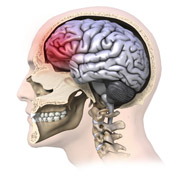Research and Innovation, UNL Office of

Center for Brain, Biology, and Behavior: Faculty Publications
Document Type
Article
Date of this Version
2023
Citation
HEALTH PSYCHOLOGY AND BEHAVIORAL MEDICINE 2023, VOL. 11, 2162528
doi:10.1080/21642850.2022.2162528
Abstract
Objective: To evaluate the association between baseline cognitive function, intervention dropout, adherence and 3-month weight loss (WL) when controlling for confounding demographic variables.
Methods: 107 (Mage = 40.9 yrs.), BMI in the overweight and obese range (BMI = 35.6 kg/m2), men (N = 17) and women (N = 90) completed a 3-month WL intervention. Participants attended weekly behavioral sessions, comply with a reduced calorie diet, and complete 100 min of physical activity (PA)/wk. Cognitive function tasks at baseline included Flanker (attention), Stroop (executive control) and working memory, demographics, body weight and cardiovascular fitness were assessed at baseline. Session attendance, adherence to PA and diet were recorded weekly.
Results: Baseline attention was positively correlated with age (p < .05), education (p < .05), attendance (p < .05), diet (p < .05) and PA (p < .05). Baseline executive control (p < .05) and working memory (p < .05) were each associated with % WL. Baseline executive control (p < .01) and working memory (p < .001) were also each associated with education. ANOVA indicated that baseline attention (p < .01) was associated with WL, specifically for comparing those who achieved 5–10% WL (p < .01) and those who achieved greater than 10% WL (p < .01) to those who dropped.
Significance: Results suggest that stronger baseline attention is associated with completion of a 3-mo. WL intervention. Executive control and working memory are associated with amount of WL achieved.
NCT registration: US NIH Clinical Trials, NCT01664715
Included in
Behavior and Behavior Mechanisms Commons, Nervous System Commons, Other Analytical, Diagnostic and Therapeutic Techniques and Equipment Commons, Other Neuroscience and Neurobiology Commons, Other Psychiatry and Psychology Commons, Rehabilitation and Therapy Commons, Sports Sciences Commons


Comments
This is an Open Access article distributed under the terms of the Creative Commons Attribution License